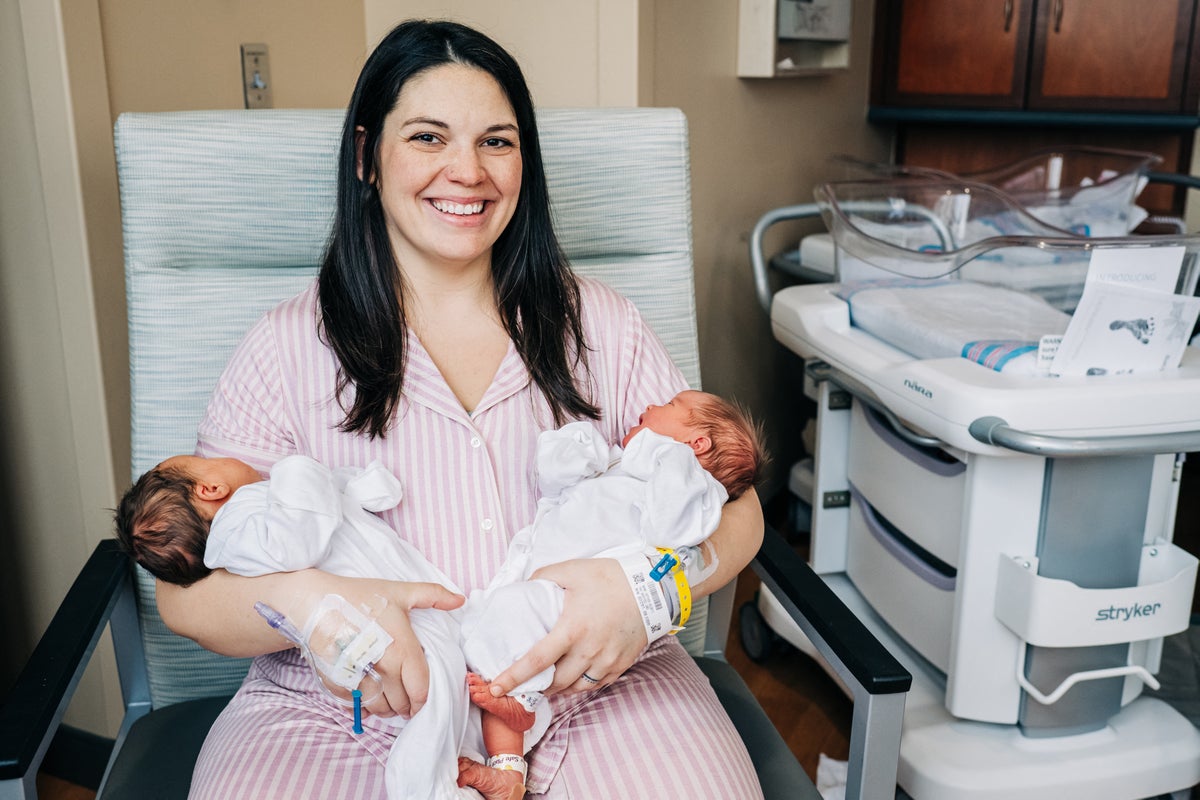
A woman in Alabama with a rare double uterus has given birth to two healthy daughters in two days following her “one in a million pregnancy”.
Kelsey Hatcher, 32, spent 20 hours in labour giving birth to twins due to her rare congenital anomaly that resulted in her having two wombs. The rare condition is thought to affect about 0.3 per cent of women.
Ms Hatcher and her husband, Caleb, welcomed Roxi Layla on Tuesday at 7.49pm (local time) and her sister Rebel Laken on Wednesday at 6.09am (local time) at the University of Alabama at Birmingham Hospital.
Both the babies were healthy and weighed over 3.1kg.
“Our miracle babies were born! They decided they were rare enough statistically that they should just go ahead and have their own birthdays too,” Ms Hatche wrote on Instagram.
“I can’t wait to share the entire birth story with you guys! While we are all home now, we will take the time bond, recover, and enjoy the holidays,” she added.
Ms Hatcher was carrying a baby on each side – a rare event known as a dicavitary pregnancy that has a one in a million chance of occurring.
“I had already taken care of Kelsey through her third pregnancy and knew she had a double uterus, but that was only one baby. Two babies in two uteri were a true medical surprise,” Ms Hatcher’s obstetrician Shweta Patel recounted in a hospital news release.
Her pregnancy was considered high risk and she was induced at 39 weeks.
“There was a cheer from everyone in the room when the first baby was delivered, but there was another baby left,” Ms Patel said.
Ms Hatcher was labouring in the left uterus while simultaneously undergoing the postpartum process in the right.
“She was having contractions with Baby B while breastfeeding Baby A,” Ms Patel added.
Although a typical twin pregnancy is defined by two babies in one uterus, Richard Davis, the doctor who co-managed the pregnancy, said it is “safe to call the girls fraternal twins”.
The first baby was delivered vaginally, as were Ms Hatcher’s previous three children, while the second one was born via C-section.
The medical team had come prepared with three potential scenarios for the delivery: both babies delivered vaginally, one baby born vaginally and one via C-section, or a C-section for both births.
In 2019, a woman with uterus didelphys in Bangladesh gave birth to twins less than a month after delivering a premature baby boy.
Arifa Sultana Iti gave birth to her first child in February that year, but learned she was still pregnant after being rushed to hospital with stomach pain 25 days later. An emergency C-section was performed to deliver the twins.







